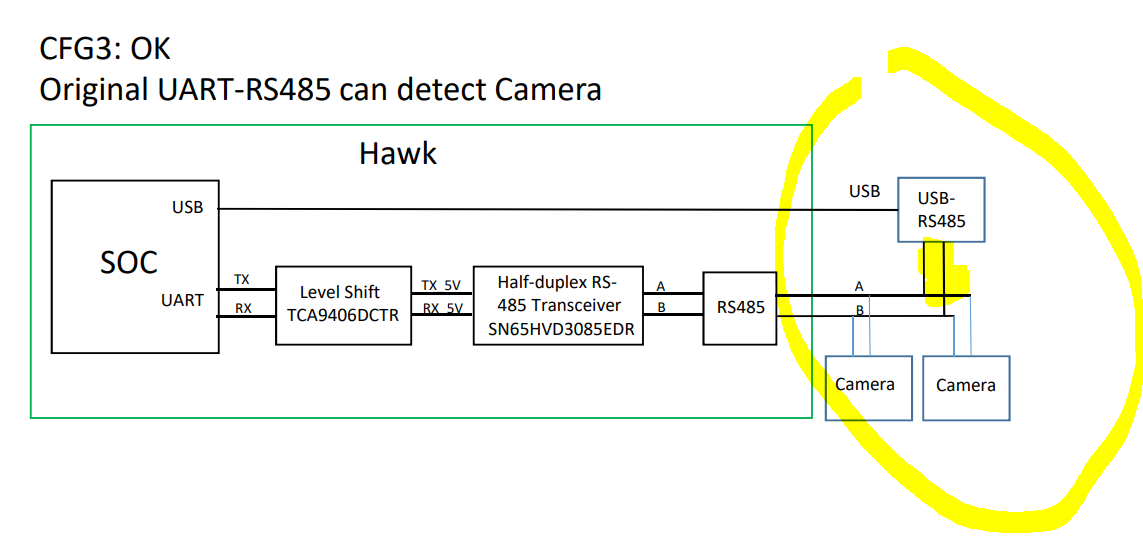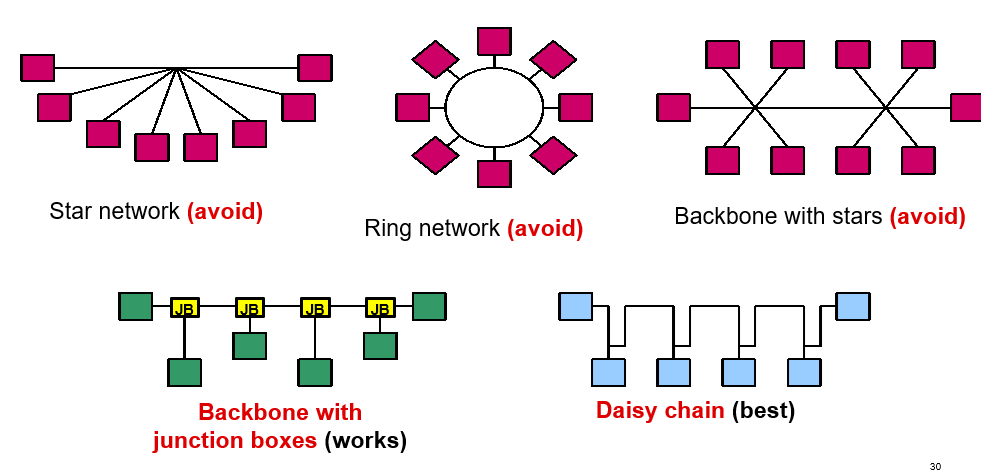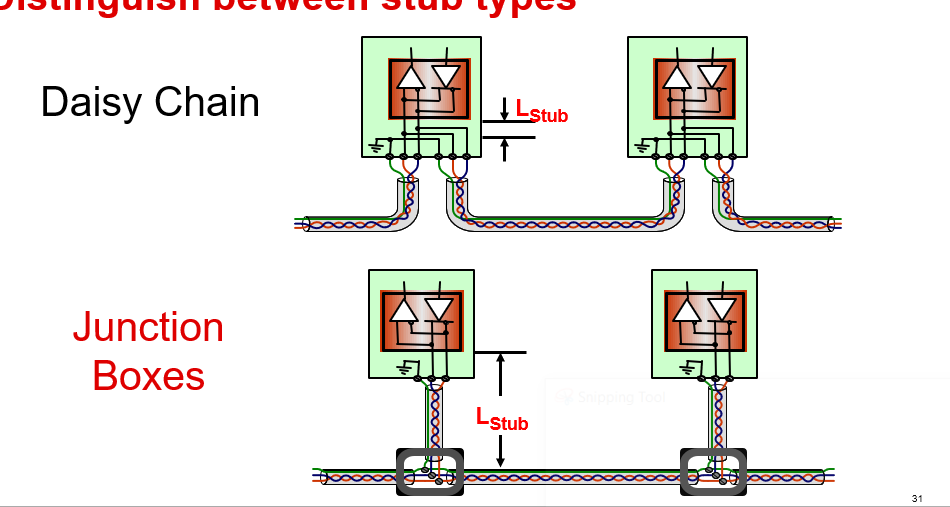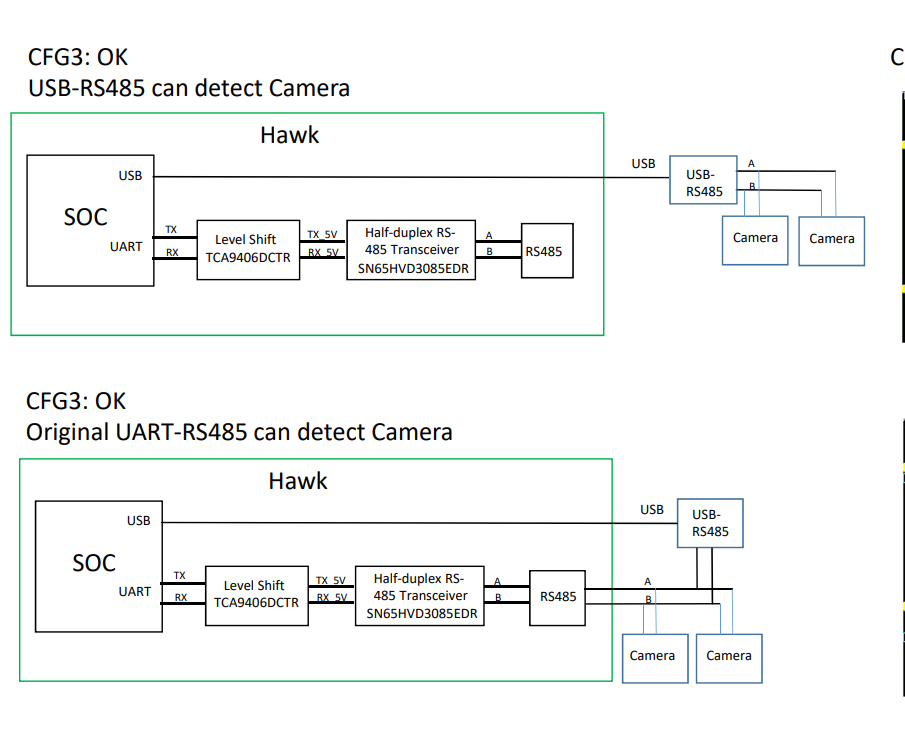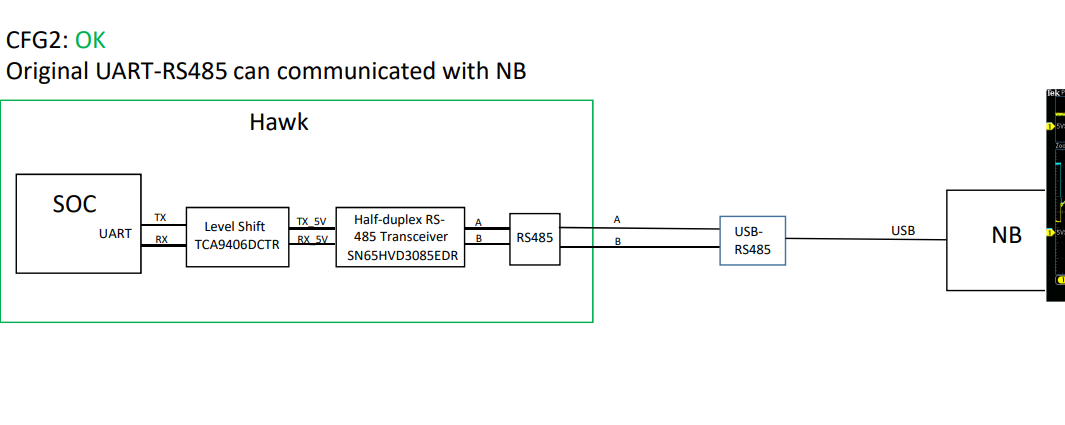Part Number: SN65HVD3085E
Hi Sir,
Our end customer feedback they met the RS485 issue of the cameras connect to our MB’ UART-RS485 port aren't been detected.
I attach the details in the attachment with the waveform we measured in yesterday, could you provide your recommendation of how to fix the issue?
Rds,
Joyce



